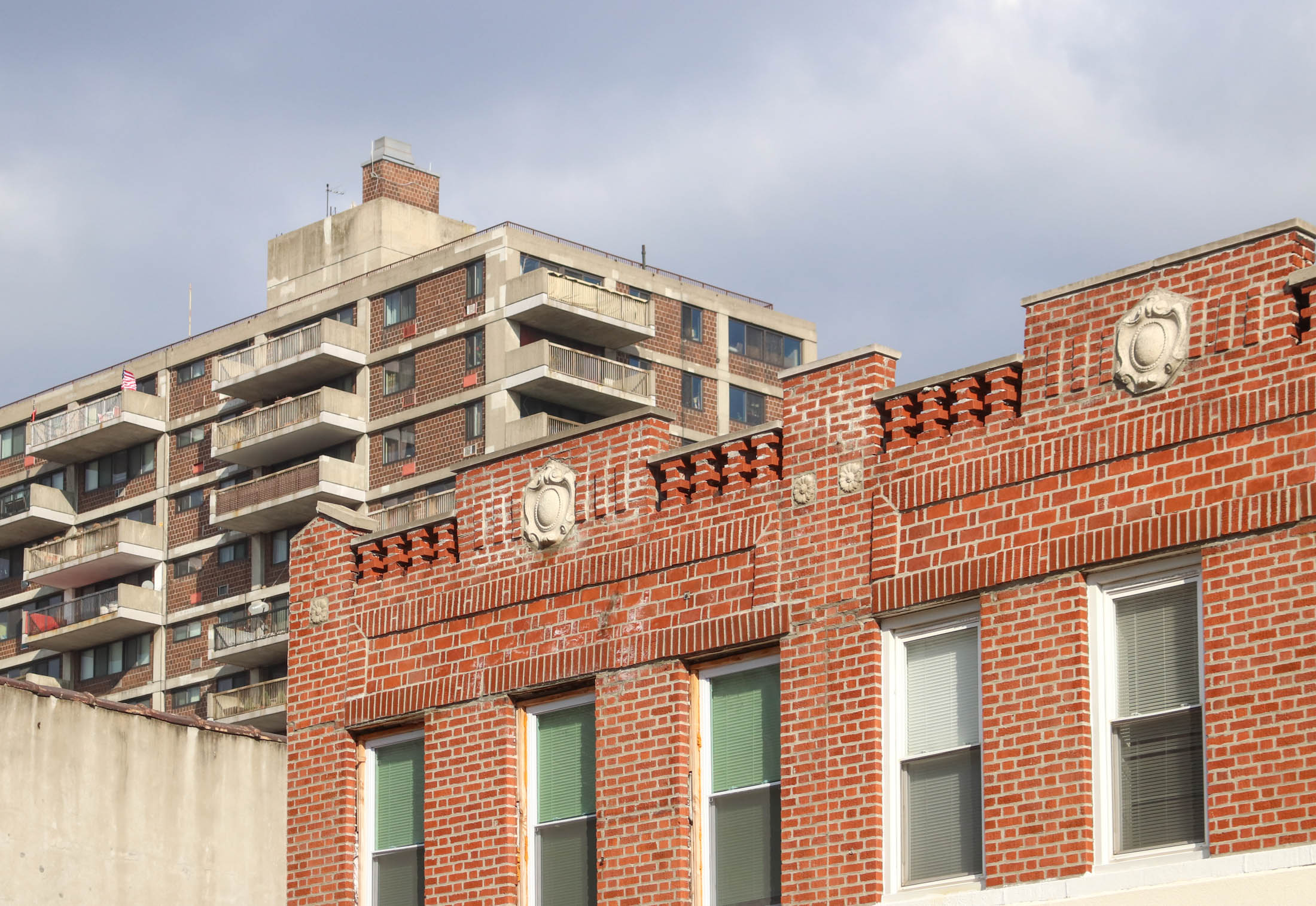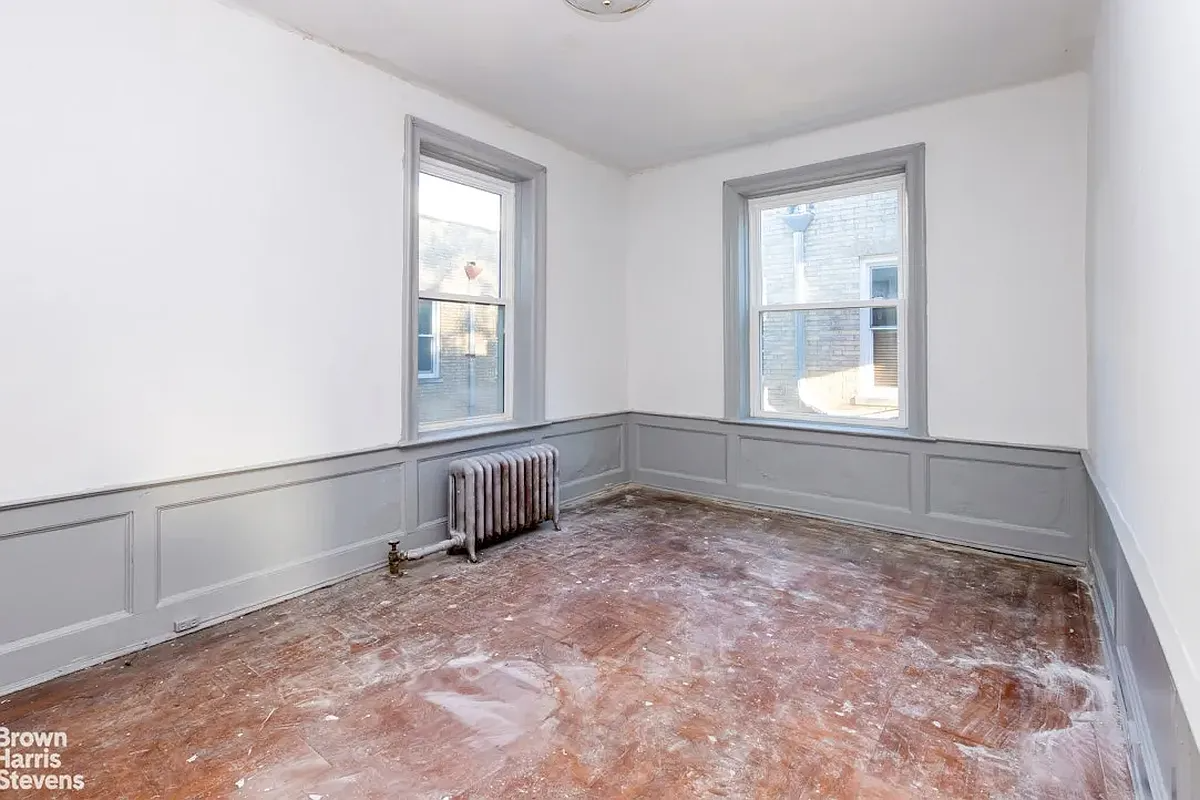Corcoran '07 Market Report: Brooklyn's Still Up
The Corcoran Group released its year-end market data today, and the brokerage’s stats show the ’07 Brooklyn market making healthy (if not huge) gains over 2006. The median sales price on all condos and co-ops was up 7 percent last year, to $590,000, while median townhouse values rose 2 percent in ’07, to $1.2 million….

 The Corcoran Group released its year-end market data today, and the brokerage’s stats show the ’07 Brooklyn market making healthy (if not huge) gains over 2006. The median sales price on all condos and co-ops was up 7 percent last year, to $590,000, while median townhouse values rose 2 percent in ’07, to $1.2 million. The really fun part of the report, however, is its breakdown of how various neighborhoods have fared, sales- and price-wise (see chart on jump). The big winner? Brooklyn Heights, where the median price shot up 19 percent, to $1.3 million. Cobble Hill/Carroll Gardens, on the other hand, showed a median price decrease of 9 percent, going from $950,000 in 2006 to $860,000 in 2007. And Park Slope’s median price slipped from $999,000 in ’06 to $928,000 in ’07. We have a few reservations about this report, including that it doesn’t specify the total number of sales it tracks, that it only compares year-over-year values, and that it basically only covers the priciest brownstone neighborhoods—though we have to give it up for the big C for devoting so much ink to Brooklyn sales data. The article in the Times this morning about the record-setting fourth-quarter Manhattan market notes that Brooklyn’s gains were more “stable” than Manhattan’s. Brooklyn showed its maturity this year because the appreciation was much more steady, said Corcoran Group president Pamela Liebman. Anyhow, do these numbers jibe with pricing trends you’ve noticed over the past year?
The Corcoran Group released its year-end market data today, and the brokerage’s stats show the ’07 Brooklyn market making healthy (if not huge) gains over 2006. The median sales price on all condos and co-ops was up 7 percent last year, to $590,000, while median townhouse values rose 2 percent in ’07, to $1.2 million. The really fun part of the report, however, is its breakdown of how various neighborhoods have fared, sales- and price-wise (see chart on jump). The big winner? Brooklyn Heights, where the median price shot up 19 percent, to $1.3 million. Cobble Hill/Carroll Gardens, on the other hand, showed a median price decrease of 9 percent, going from $950,000 in 2006 to $860,000 in 2007. And Park Slope’s median price slipped from $999,000 in ’06 to $928,000 in ’07. We have a few reservations about this report, including that it doesn’t specify the total number of sales it tracks, that it only compares year-over-year values, and that it basically only covers the priciest brownstone neighborhoods—though we have to give it up for the big C for devoting so much ink to Brooklyn sales data. The article in the Times this morning about the record-setting fourth-quarter Manhattan market notes that Brooklyn’s gains were more “stable” than Manhattan’s. Brooklyn showed its maturity this year because the appreciation was much more steady, said Corcoran Group president Pamela Liebman. Anyhow, do these numbers jibe with pricing trends you’ve noticed over the past year?
Apartment Prices in Manhattan Defy National Real Estate Slide [NY Times]
Photo by threecee.






I’ve read all the post and did the calcualtions and I think I finally get it.
Save Money!!
There really is NO need to use language like this or get so angry.
Well, all I have to say is I’d love to have Lou over for dinner to discuss…even Polemicist could come to debate. Mr. Polemicist, you work on tall buildings, am I correct?
Oh, well. This has been interesting though tiring reading. My eyes are not what they used to be.
I just wish the F-word could be avoided by Somebody…and Polemicist was a bit obnoxious when it really wasn’t called for. He usually is. Though, I do agree with him on his main long entry at the top regarding the economy in general.
Thanks everyone for some food for thought on this cold January evening!
TheGrammarLady
Yo! Investor Lou, up yours!
“For instance, Bed-Stuy was a dangerous and undesirable Neighborhood. There is a risk to investing in Bed-Stuy a while ago. An investment property will be harder to manage because you will generally have lower FICO score individuals and higher vacancies.”
How would you know that? It was called Redlining (Racism)
“The Higher the Risk, the higher the Cap Rate”
Nope stupid. The questions to ask (income-expense=profit). I wont go into detail about this.
“But have you found me to be condescending or Arrogant?”
No I think you are a mother fucking asshole. I wish you kill yourself. Fuck you!
The What (Yes the What Bitch!)
Someday this war is gonna end….
How will there be more listings? Please explain that logic. More newly completed condo listings are coming if condos are your thing, but the listings of houses are going to dwindle more and more. How many houses do you think there are in Park Slope, Cobble Hill, Carroll Gardens? There’s already plenty talk of how low the brownstone inventory is in those areas. There was a huge wave of new homeowners coming in and buying up those houses over the last several years. On our block, all the older homeowners have sold except about 4 brownstones, and a couple of those will pass their houses to their kids. Like we ourselves plan to do 40 years from now. The new homeowners aren’t flippers. Most new brownstone owners are entirely based in NYC in their careers, so they are there to stay. They might sell to buy a different place, but the more the market dips the less likely they will sell to trade for something else. You can hope people get a divorce I guess, but don’t think you will see as many houses on the market again as you did in recent years. Nobody is going to sell for less than they paid for the house plus renovations, if the market drops. Don’t even know where that idea comes from. The irony of those who waited to buy and now think there will be bargains, is that the inventory will be down to scraps.
5:36 Polemicist – I think we are at a misunderstanding. My definition of Cashflow is NOI minus Debt Service.
How did you think I was was talking otherwise?
The other thing is a Neighborhood does have a CAP Rate and it changes over time.
For instance, Bed-Stuy was a dangerous and undesirable Neighborhood. There is a risk to investing in Bed-Stuy a while ago. An investment property will be harder to manage because you will generally have lower FICO score individuals and higher vacancies.
The Higher the Risk, the higher the Cap Rate.
In fact, I normally use a DCF model or more likely, an IRR model.
I just didn’t want to the readers of this blog to become Bored… which have already been achieved and I certainly didn’t want ppl degrading themselves to condescending laugage, which I believe you have already done.
As far as the GM Building, I would probably perform the DCF or IRR calculations to around 10 years.
There must be something about my posting that is mixing up people, and for that I appologize.
But have you found me to be condescending or Arrogant?
Whether or not I have heard of Inwood or Hoskold premise doesn’t mean I can’t arrive at my own analysis or theory.
After reading your reply to my posting, I’m not sure you are reading my posting very thoroughly.
Is it worth arguing here? Probably not.
Investor Lou
6:19 – Very good post, and right on the money.
If anything, the spiel provided by the brokerage firms may generate enthusiasm and exaggerated expectations among potential sellers. The result: more listings. Educated buyers (not foreigners), on the other hand, are becoming much more cautious with a purchase of this magnitude and will look very carefully at the comps and the real condition of the market. From what I’ve read, pretty much every potential buyer on the blogs understands the degree to which these #s are being spun by the brokerages.
I think medium-term this is just going to generate an increase in inventory and exacerbate the market. We’ll know in a few months.
For what it’s worth:
Rising average prices, and even rising median prices, do not necessarily reflect rising prices.
Which is to say, many units selling are new luxury condos, which command a price premium. This drags up both mean and median prices, AND drags up mean and median price per sqaure foot. BUT the increased prices for those units reflects the increased quality of those units versus the older stock. SO, if you have a coop apartment to sell, none of the rising price data means that the price of your particular apartment has increased… the apartment itself, after all, hasn’t changed. (This of course excludes any renovation, and the chance of luckily having bought into a particularly hot neighborhood.)
As an example, I have a coop in Fort Greene. Over the last few years I’ve checking comps in my building and around the neighborhood, while considering selling and taking my profits. What I’ve seen is this: even in one of the hottest neighborhoods in NYC, even as Corcoran and Brownstoner commenters shout into the wind that prices are rising, the value of my apartment doesn’t seem to have changed since mid-2005.
Many property-owning Bstoner commenters seem really enthusiastic about data showing rising prices… but they would do well to remember that it doesn’t mean that the value of their property has risen.
Of course, Corcoran is going use the data to tell someone who bought in 2005 that they can sell for double their money… and buyers might even swallow it. But it seems to me (admittedly not an economist) that this represents an artificial kind of price inflation. I think those owners who have themselves convinced that their property has greatly increased in the last couple years while putting no work into it and with no real neighborhood change, will be the most vulnerable to depreciation if/when the market cools.
For the graduate students who are (inevitably) writing dissertations about the way we (contemporary NYers/Americans) deal with emotional and moral crises via real estate, this thread will be great material.
5:12 – I agree. I use a better example than the bond example and it does not compare to real estate’s cap rate. I’ll have to either modify the example a bit better or use a different instrument like the Forward Dividend Yield on a Stock which might better correlate.
5:13 – Not creative Accounting… Creative Investment Strategy. I’m happy to entertain you through such Strategy!
5:21 – Not really relying on current Cap Rates but FUTURE Cap Rates. I anticipate a lowering of Cap Rate for a neighborhood as it becomes safer, more gentrified and private and Government Investment.
I think you have my logic a little backwards. I’m anticipating the increase desirability of the neighborhood so I buy in at a Cap Rate that I know will trend downwards as the neighborhood becomes more desireable, safer, trendier.
Pratt Institute is helping Myrtle Ave area near Hall St by announcing their development. I anticipate that the Cap Rates will move down.
The Cap Rates move down because of 1 of 2 reasons. 1) Increasing Price of the Building or 2) Increasing Rental Income of the building.
It’s because I am anticipating a combination of the both that I don’t use just Increasing Price. By using CAP RATE, 1) and 2) are implied.
Does that make much sense?
Gross Rent Multiplier does not take into account Deferred Maintanence or increasing expenses. Cap Rate does, however, in it’s anticipation of Net Operating Income.
Many times I will meet with a Seller who will want to quote me the GRM and I have to ask about the expenses to get a NOI…. which leads to Cap Rate! See?!
Investor Lou